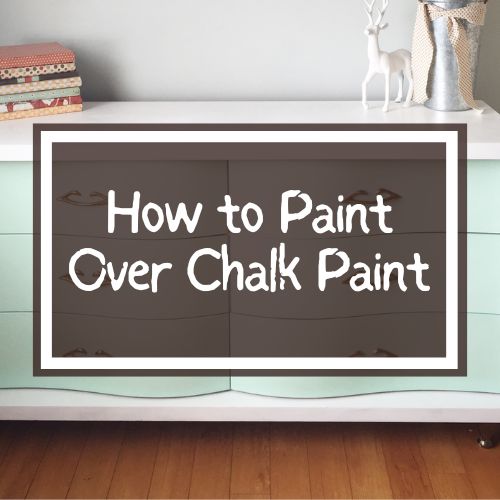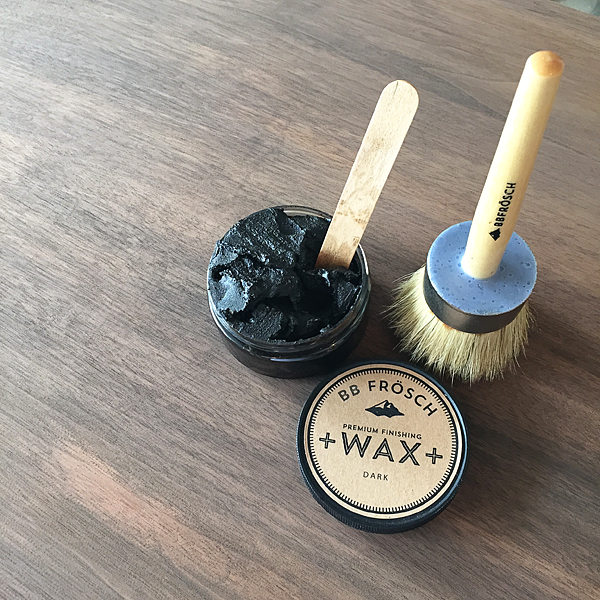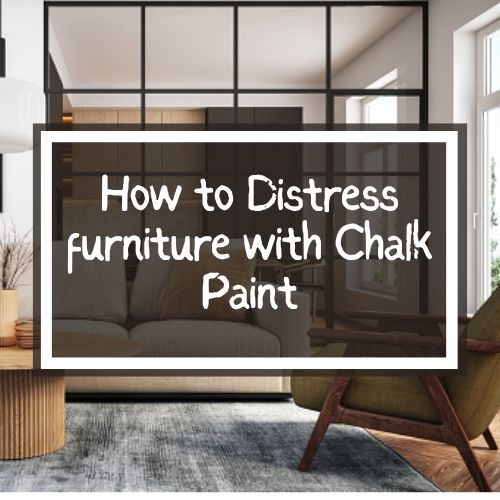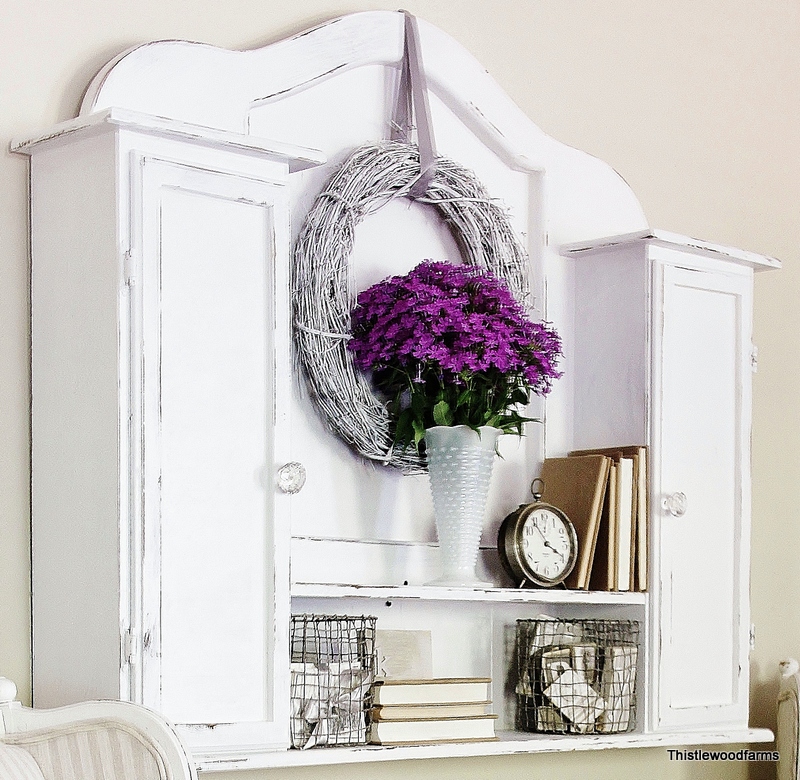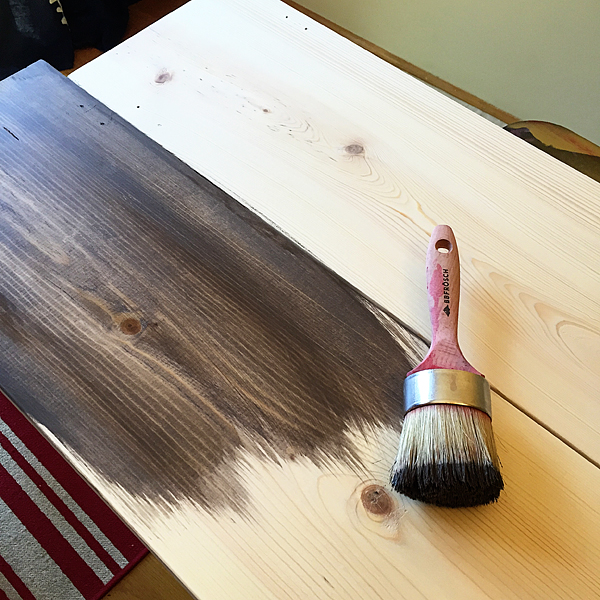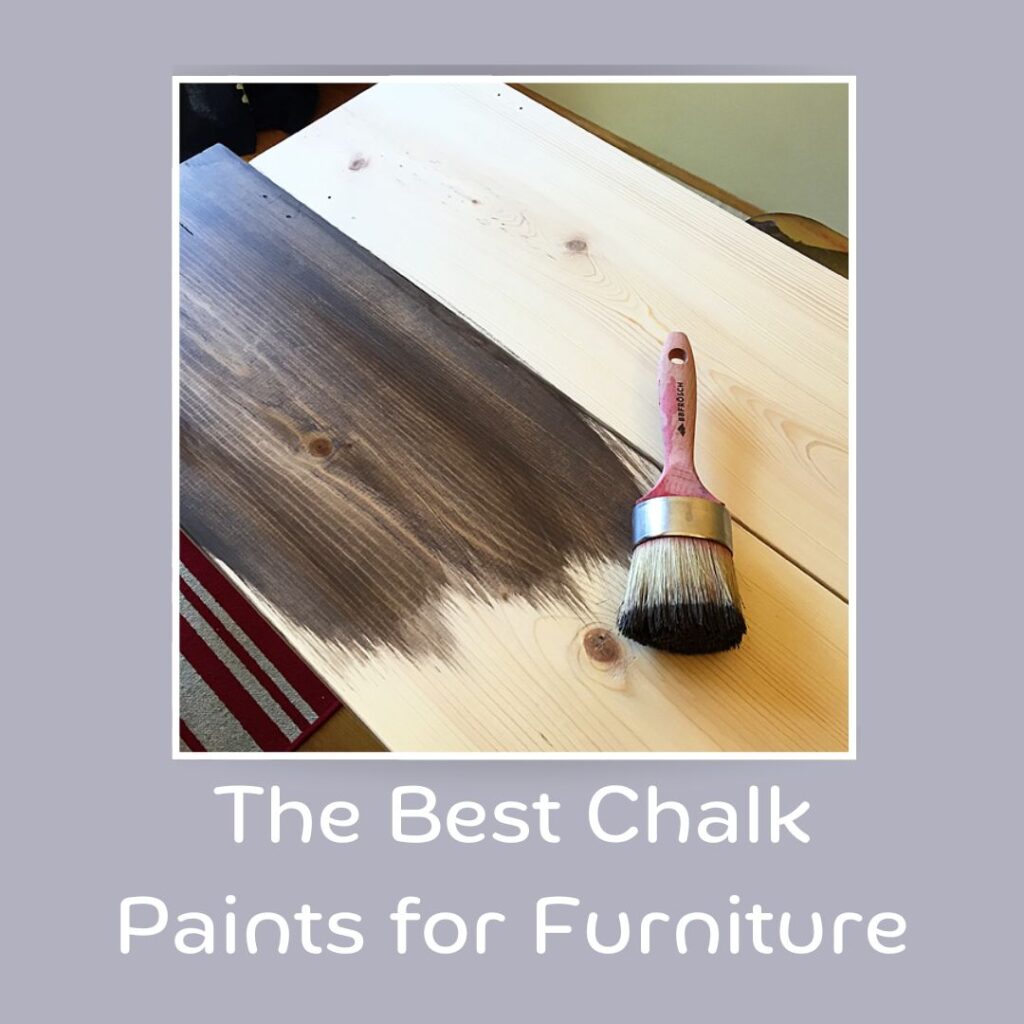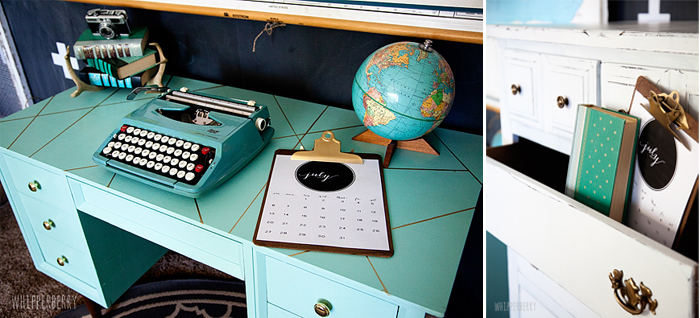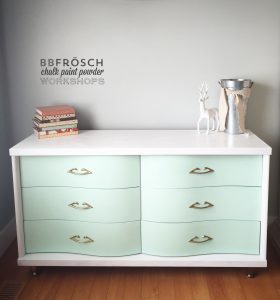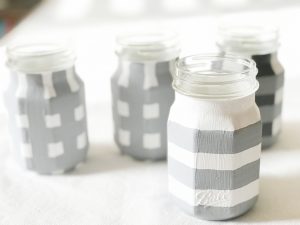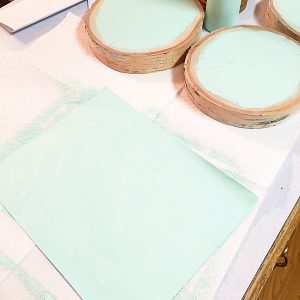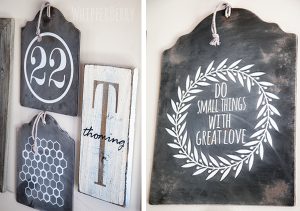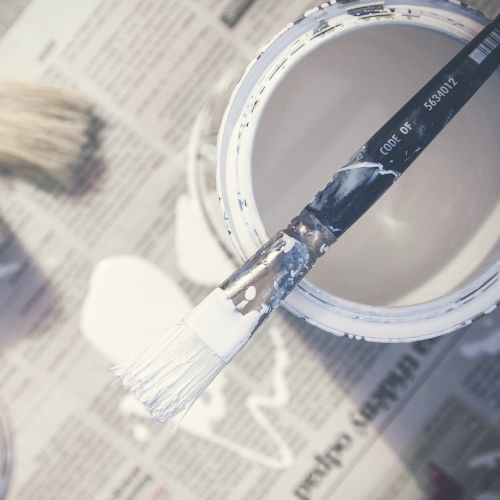If you’re new to painting with chalk paint, you probably have read a lot of different opinions about the best way to protect your chalk-painted surface. There are several choices, but if you want to maintain the smooth matte appearance of chalk paint, using a wax sealant is, in my opinion, a great choice.
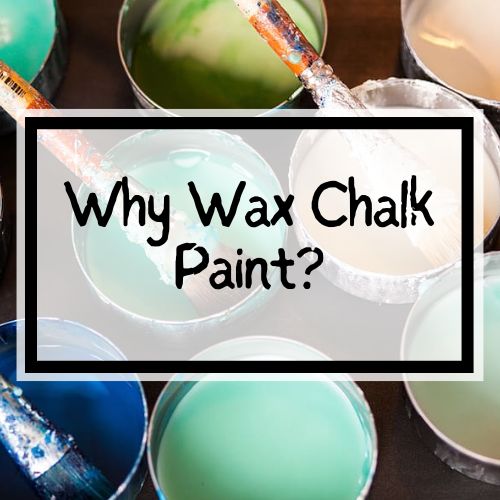
Using wax as a protective coating on wood furniture isn’t a new concept. In fact, wax (usually beeswax) has been used as a top coat on furniture since the mid-1700s to early 1800s.
Due to the fact that varnishes were expensive, wax finishes were commonly used on early American furniture. If you’re trying to achieve a somewhat authentic “antique” appearance, chalk paint wax is the perfect choice for this.
Do You Need to Wax Chalk Paint?
Whether or not you need to wax chalk paint is really a matter of preference on your part.
The short answer to this question is that you don’t need to apply a wax sealant, but your painted piece will look better and the paint job will last much longer.
Chalk paint is a less durable paint when compared to latex or alkyd-hybrid paints. It’s easier for it to get scratched, and temperature changes and moisture will degrade your paint job.
For these reasons, it just makes sense to apply a protective sealant over your painted furniture, especially on chalk-painted furniture or cabinets that will be touched or moved frequently. You can see my suggestions for the best paint for furniture here.
Chalk paint wax is an excellent choice, both for its protective qualities and for the refined appearance of the end result.
It should be mentioned here that a wax coat needs to be refreshed every couple of years. You don’t have to apply several coats, but a good cleaning followed by a fresh wax coating will keep your furniture looking great.
As an alternative to applying wax, you could use a polyacrylic sealant, or leave the paint without any top coat at all.
But ultimately, I think chalk paint wax sealer gives the perfect “vintage” look while providing a strong protective finish to your chalk-painted furniture.
What Does Chalk Paint Wax do?
Chalk paint wax provides a protective top coat over any chalk-painted surface. It will give the paint a very subtle, satiny sheen, but it isn’t super-glossy.
It’s a nice choice to use if you want to preserve the look of a completely matte finish as much as possible. It also deepens the color of chalk paint a bit and will help prevent the color from fading over time.
Wax will prevent chalk paint from chipping or getting scratched. This is particularly important to use on any distressed furniture.
If you don’t have a sealant coat over your distressed furniture, you risk unintentional chipping and scuffing occurring around the distressed areas.
A little bit of distressing looks great, but if it starts getting chipped unintentionally the look will be much more “shabby” than “chic”.
Chalk paint wax is water-resistant. This is important because chalk paint is water soluble. If you have a chalk-painted surface that isn’t covered with a sealant coat, any moisture will eventually damage the paint.
Another thing that chalk paint wax can “do” is to give the appearance of an antique patina to your painted furniture.
Many brands of chalk paint wax offer tinted or darker-colored waxes. These are applied to give a sheer wash of color over the paint, creating the look of an aged antique.
While the wax offers excellent protection against moisture and chipping, it isn’t heat resistant. It’s important to remember that you shouldn’t place hot items (such as hot food dishes or hot beverages) directly on a waxed wood surface.
Hot items will degrade or possibly melt the wax coat.
Can You Paint Over Chalk Paint That Has Been Waxed?
It’s fairly easy to paint over anything that has already been painted with chalk paint, It with a little prep work, of course. You can paint over chalk paint, but you really can’t paint directly on top of something that was previously waxed.
I explain in more detail here, but essentially you’ll need to remove any prior wax finish before you can repaint. Chalk paint, or any other type of paint, simply won’t stick to a wax finish.
A bit of scrubbing with mineral spirits, followed by cleaning with a good degreaser should remove an existing chalk paint wax coating. It’s important to remove all the wax, so pay attention to corners and any carved surfaces.
What Happens If You Don’t Wax Chalk Paint?
If you don’t want to apply wax over your chalk paint, that’s fine. Your paint might look good for a long time.
However, there’s no guarantee of that, and you’ll definitely have to be careful not to expose your chalk-painted project to excess moisture. Because chalk paint is water soluble, moisture will eventually wear away your paint job.
You’ll also have to be careful to limit repetitive touching or placing anything heavy on your chalk-painted piece if it doesn’t have a protective coating.
The main thing that will probably happen if you don’t apply wax (or another protective coat) on your chalk paint is that it’s going to start showing wear and tear.
This could take the form of chipping, scratches, and scuff marks. This is especially true near any place you distressed the chalk paint.
Chalk paint is very porous, so without a protective wax coat it’s going to be much more challenging to keep your painted surface clean.
Anything that is painted with chalk paint is more likely to absorb dirt and pick up small stains. A wax coating helps to repel most dirt and shouldn’t be as susceptible to staining.
How To Wax Over Chalk Paint – A Quick Guide
It’s not difficult to apply wax over chalk paint! It takes patience, and a little “elbow grease”, but the results are worth it!
Here is the process, broken out into a few simple steps:
- The first thing to keep in mind, before even opening your can of chalk paint wax, is to make sure your chalk-painted surface is completely dry. Chalk paint dries quickly, but it’s recommended to let the paint dry for at least 24 hours before applying wax. If the paint isn’t fully dry, you could end up with some of the paint coming off when you buff the wax finish.
- First things first, gather your materials! You will need your chalk paint wax, a wax brush and/or lint-free cloths, and a paper plate.
- Make sure your painted surface is completely clean. You can remove any dust or dirt with a damp cloth.
- To apply the wax, first, take your wax brush or a lint-free cloth (old t-shirts are perfect for this!) and scoop out a small amount of wax onto a paper plate. You can apply directly from the can of wax, but having it on the paper plate will make it easier to avoid using too much wax.
If you’re using a wax brush, you want to get a small amount of wax spread just on the tips of the bristles. It’s really important to not use too much wax at one time; thin coats will give you the best results! If you’re using a cloth, “scoop” a small amount onto the cloth. You want to wipe the wax across your painted furniture in even strokes. At this point, you’re just applying the wax, as evenly as possible, to get all of the painted surface covered. Take the time to make sure corners and any intricately carved areas are fully waxed.
If you’re working on a large piece of furniture, it will be better to apply and buff the wax in sections instead of trying to cover it all at once.
When you’re applying the wax, think of it like rubbing lotion onto your skin. If you use too much, it’ll just feel greasy and won’t absorb!
- Once you’ve got the wax applied all over, it’s time to buff! You’ll need a clean, dry lint-free cloth for this. All you do at this point is lightly “buff” the wax, using circular motions. The goal here is to remove any excess wax, leaving a nice thin coat of wax all over. If you use too much wax, or don’t remove all of the excess, it could look cloudy once you’re done. A good way to determine if you’ve removed all of the excess wax is by touch. If the surface feels a little bit sticky or tacky, you still need to buff some more. Once the wax coating feels “dry”, you’re done.
- You need to let each coat of chalk paint wax cure for about 24 hours before applying a second and/or third coat. If you’re using a tinted wax, you apply it the same way but the first coat should be a clear wax layer, then apply the tinted wax as your second and/or third coat.
- Once you’re done with as many coats of chalk paint wax as you want, let it cure for at least three to four days before using. The full cure time for chalk paint wax is actually several weeks, but after a few days, you can put your painted furniture in place and enjoy it. Just be careful not to put anything heavy on top of it or touch it too much for a couple of weeks.
- If you used a wax brush, you’ll want to clean it as soon as you’re done applying the wax. An easy method for this is to first massage some canola oil into the bristles of the brush, then (without rinsing) rub some dish detergent into the brush. You should be able to use your hands to remove the wax from the bristles. This is kind of messy, so you might want to wear gloves. The final step is to rinse the brush with hot water, and hang it up or lay it flat to dry.
The Best Chalk Paint Wax
There are so many brands of chalk paint wax available! It’s hard to choose which are the best to use, but we have a helpful post on this website specifically about the best chalk paint wax brands. Here’s a quick recommendation if you’re short on time and don’t want to view the full article.
Annie Sloan Chalk Paint Wax – $16 for 120ml
Annie Sloan’s chalk paint wax has a soft buttery texture that makes it very easy to use. It is sold in 120ml, 500ml, and 2.5-liter quantities, which means you don’t necessarily have to buy more than you’ll need.
In addition to clear wax, she also makes white, dark, and black tinted wax. Another great wax from Annie Sloan is her selection of “Gilding Wax” products, which gives a slight metallic sheen; it’s lovely on carved details and raised textures.
How Many Coats of Wax on Chalk Paint?
You need anywhere between one and five layers of wax on chalk paint. The number depends on how thick you apply the chalk paint. My suggestion is to use more coats but to make them thinner. This usually gives the best results but it takes longer.
How Soon Can You Wax After Chalk Paint?
You can start applying wax after one hour. This is the shortest time frame I’d recommend if you’re in a hurry. I’d suggest waiting two hours to make sure it’s dry enough to start waxing over it. Depending on your climate and the humidity where you live it may take a little less time or a little more time for it to dry fully.
How Long Should Chalk Paint Dry Before Applying Wax?
Chalk paint should dry before for an hour or more before you start applying wax. As mentioned before, your climate can pay a large role in how fast the chalk paint dries so I’d suggest waiting a little longer.
Wrapping This Guide Up
Hopefully, this answered any questions about why you should apply chalk paint wax over your chalk-painted projects. After you take the time to create a beautifully painted piece of furniture, making the effort to apply a protective wax coat will ensure your project will look its best for a long time.
